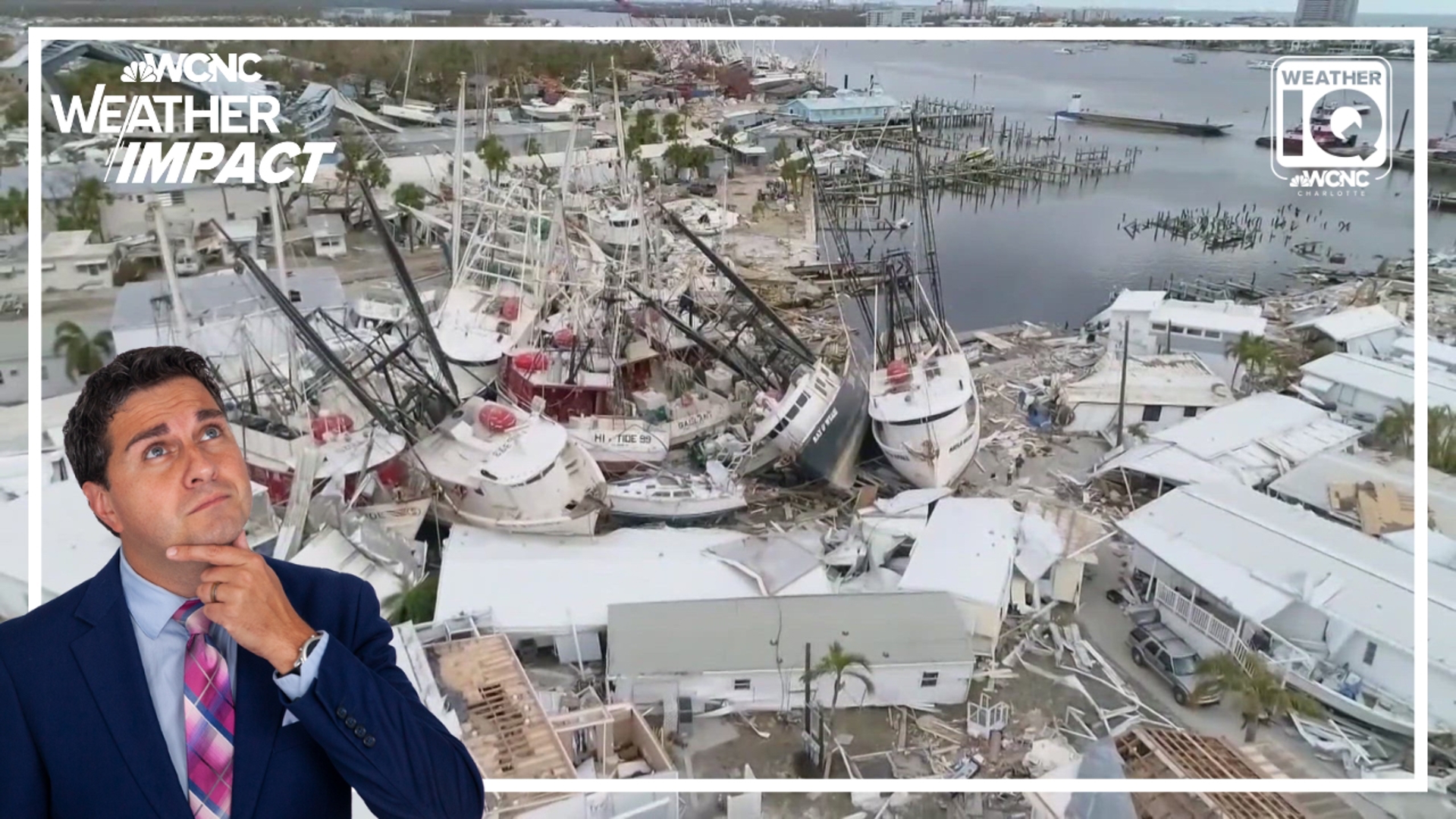CHARLOTTE, N.C. — The United States has seen at least one tropical event costing a billion dollars for nine years in a row. The most recent was Hurricane Berly from this year.
The cost of tropical storms and hurricanes goes up every year. Over the past 30 years, the average damage cost has increased between 3% to 4% per year. The rising cost is caused by inflation and ongoing coastal development of new construction.
Top 3 costliest hurricanes in history
Number 3: Hurricane Ian
Hurricane Ian in 2022 was a devastating hurricane that caused over $111 billion in damage. This only happened two years ago, and costs are already $6.7 billion more expensive.
RAISE YOUR WEATHER IQ: Hurricane Season: The letters to look out for
Number 2: Hurricane Harvey
The second costliest was Hurricane Harvey in 2017. Harvey was a major hurricane at landfall and made history from its historic rainfall when it stalled over eastern Texas for days.
Harvey caused $125 billion in damage but that cost in today’s dollars is around $159 billion, meaning damage would be over $33 billion more compared to just seven years ago.
Number 1: Hurricane Katrina
Katrina is one of the most famous hurricanes but also the costliest.
In 2005, Katrina made landfall as a category 3 hurricane and caused $125 billion in damage. Based on the 2024 Consumer Price Index, that cost would now be $200 billion. That is up 60% compared to 19 years ago.
Notable hurricanes in the Carolinas
- Hurricane Floyd's $6.5 billion in 1999 costs would be 86% more at an estimated $12.1 billion in 2024
- Hurricane Fran's cost would be double from 1996 up from $5 billion to $10 billion today
- Hurricane Hugo caused $9 billion in damage back in 1989. The cost today would be $22.6 billion, up a whopping 151%
Why these costs will continue to go up
Storms are causing more damage because there are simply more people and property in vulnerable areas like the coast and river floodplains. Hurricane Andrew in 1992 struck Homestead, Florida. That population today is more than triple what it was over 30 years ago.
Along with that, climate change continues to increase hurricane frequency and intensity. According to the US National Climate Assessment, sea level rise is also worsening hurricane storm surge.
Given all these compounding hazards and risks, there is an increased need to focus on where we build, how we build, and investing in infrastructure updates designed for the new climate norm.
Contact Chris Mulcahy at cmulcahy@wcnc.com and follow him on Facebook, X, Instagram and TikTok.

